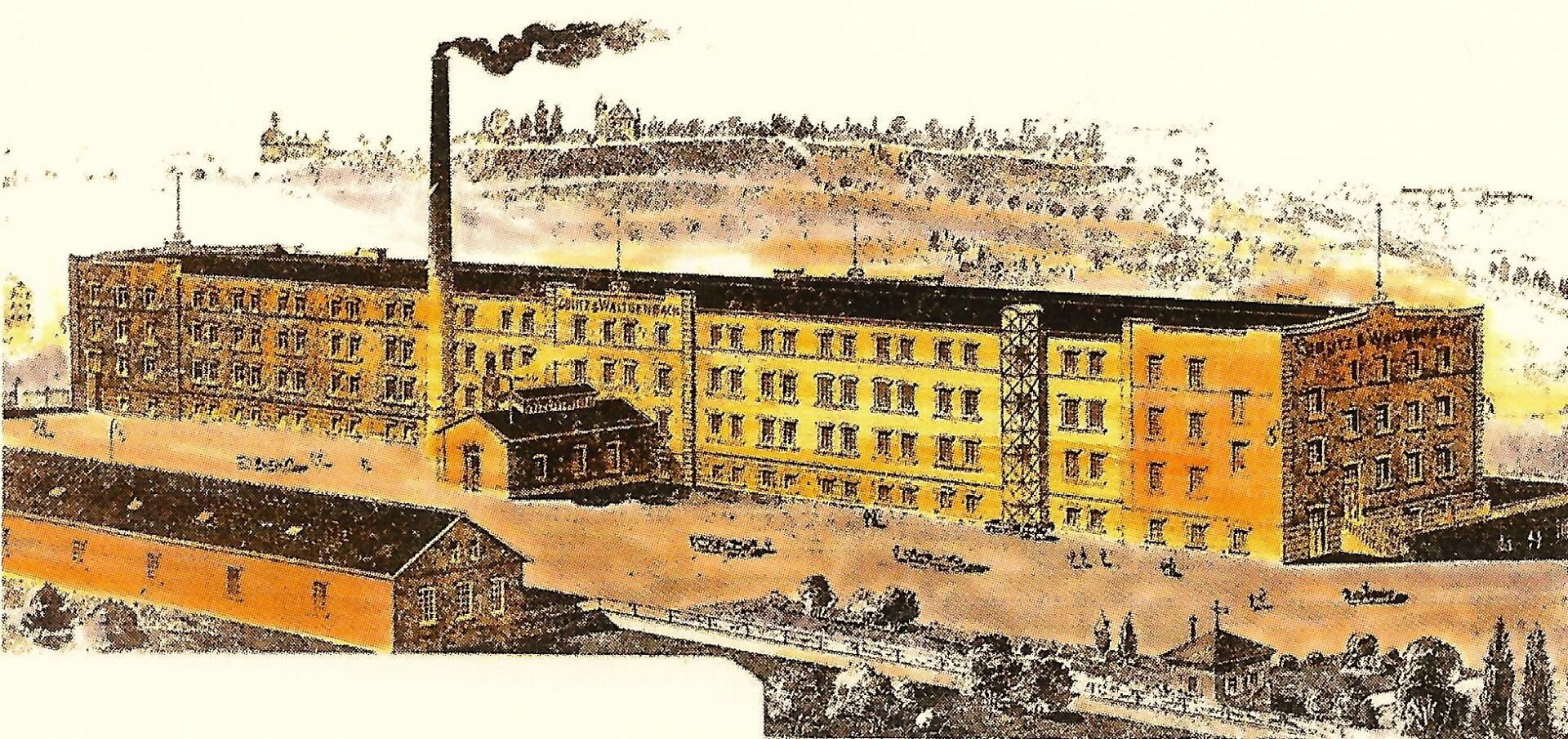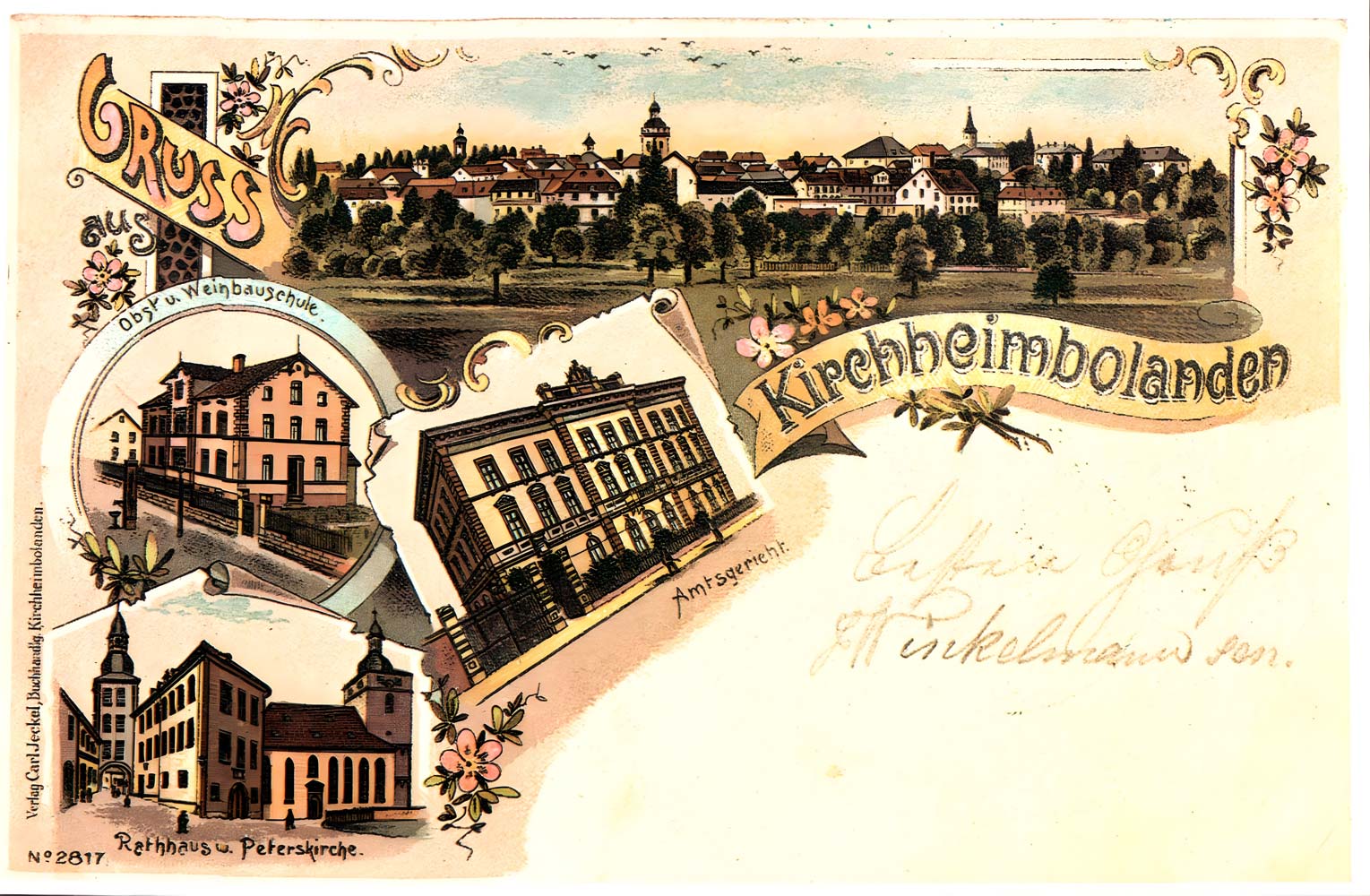Station road
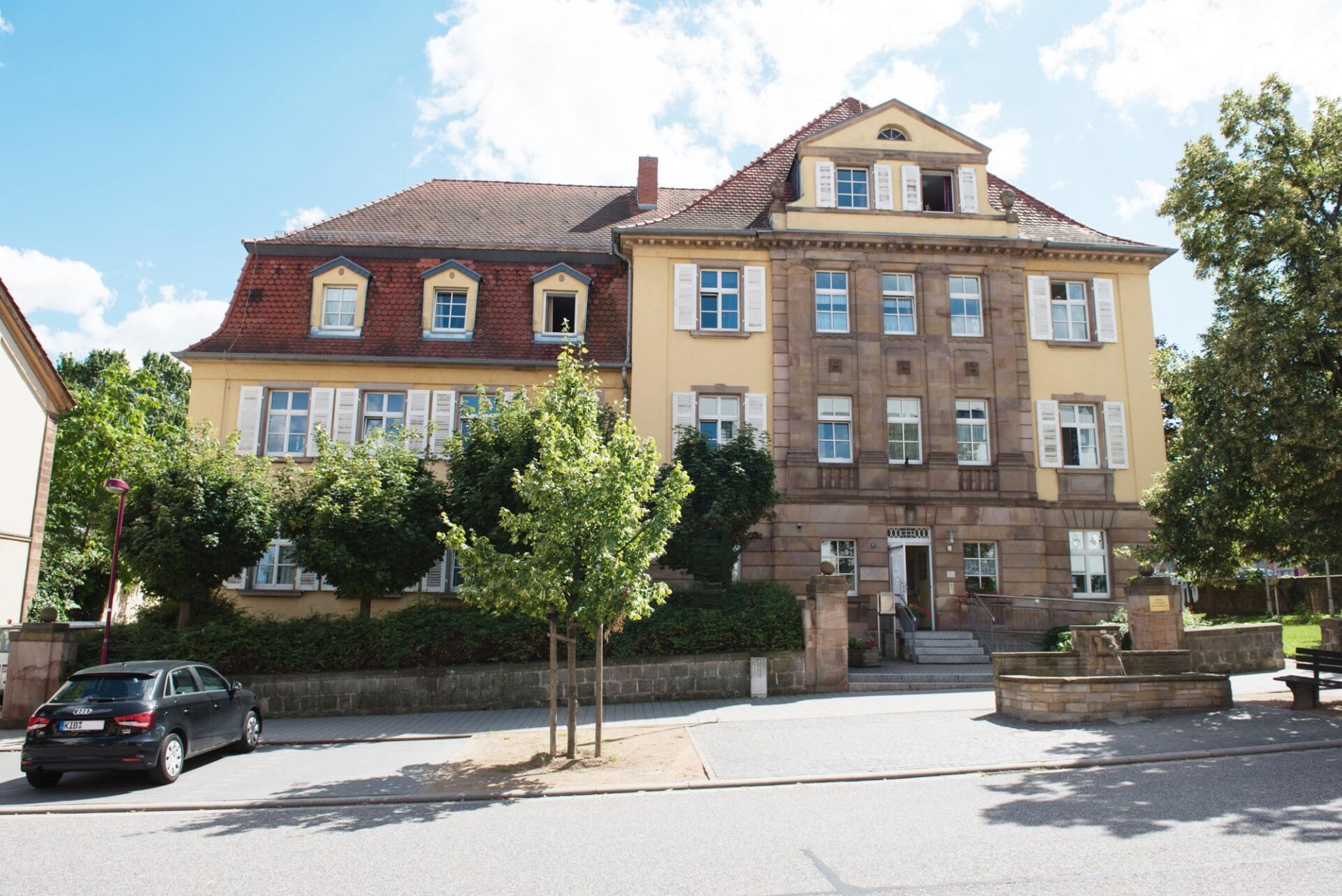
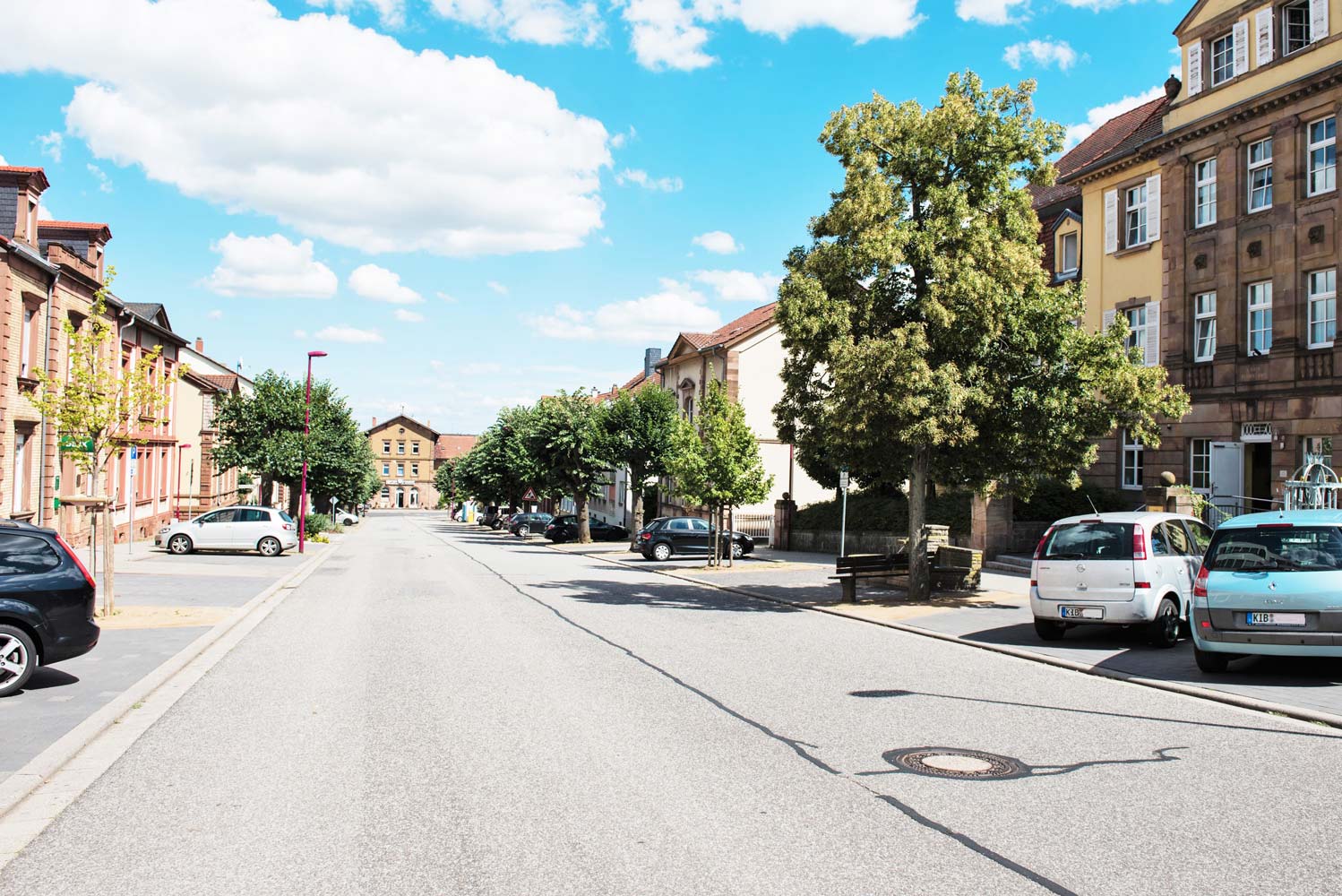
Palatinate-Bavarian country town
With the creation of the “Bavarian Rhine Palatinate” in 1816, Kirchheimbolanden became a rural town whose population grew from 2,500 to 3,600 by 1918. That was an increase of around 40%.
In the Palatinate as a whole, growth was around 108%. Kirchheimbolanden’s growth was therefore below average. Only the connection to the railroad network in 1874 provided a stronger boost.
A “Reise-Handbuch durch alle Theile der Königlich-bayerischen Rheinpfalz,” published in Zweibrücken in 1841, describes the town as quite cheerful and lively. It has a fairly straight and wide main street, but the other alleyways are mostly narrow and unregulated, which is also due to the somewhat uneven location at the foot of the hill. There are some very pretty houses.
The “Guide to the Palatinate climatic health resort” from 1905 then sets a completely different tone:
Kirchheimbolanden, 250 meters above sea level, is the seat of a district office, a district court, a forestry office, a rent office, two notaries, a fire insurance inspectorate, a measuring authority and a tax inspectorate, has a Catholic and two Protestant churches, a synagogue, a progymnasium, a preparatory school, a municipal secondary school, an agricultural winter school, two political newspapers, a large shoe factory and an important wagon factory, a water supply and a gasworks. There are also 3 doctors and 2 pharmacies.
But these are not the only superlatives mentioned in 1905. Special mention is also made of the Kurhaus on the Schillerhain, situated on a hill (351 m high) about 20 minutes from the town. Newly built, stately villa in
in a beautiful, shady area, right next to the forest, with a wonderful view of the Rhine and Odenwald as well as the Donnersberg. Comfortably furnished and exemplary managed house. Price of the rooms depending on choice from 1 to 2.50 Mk.; board price of the catering per day 3.50 Mk.
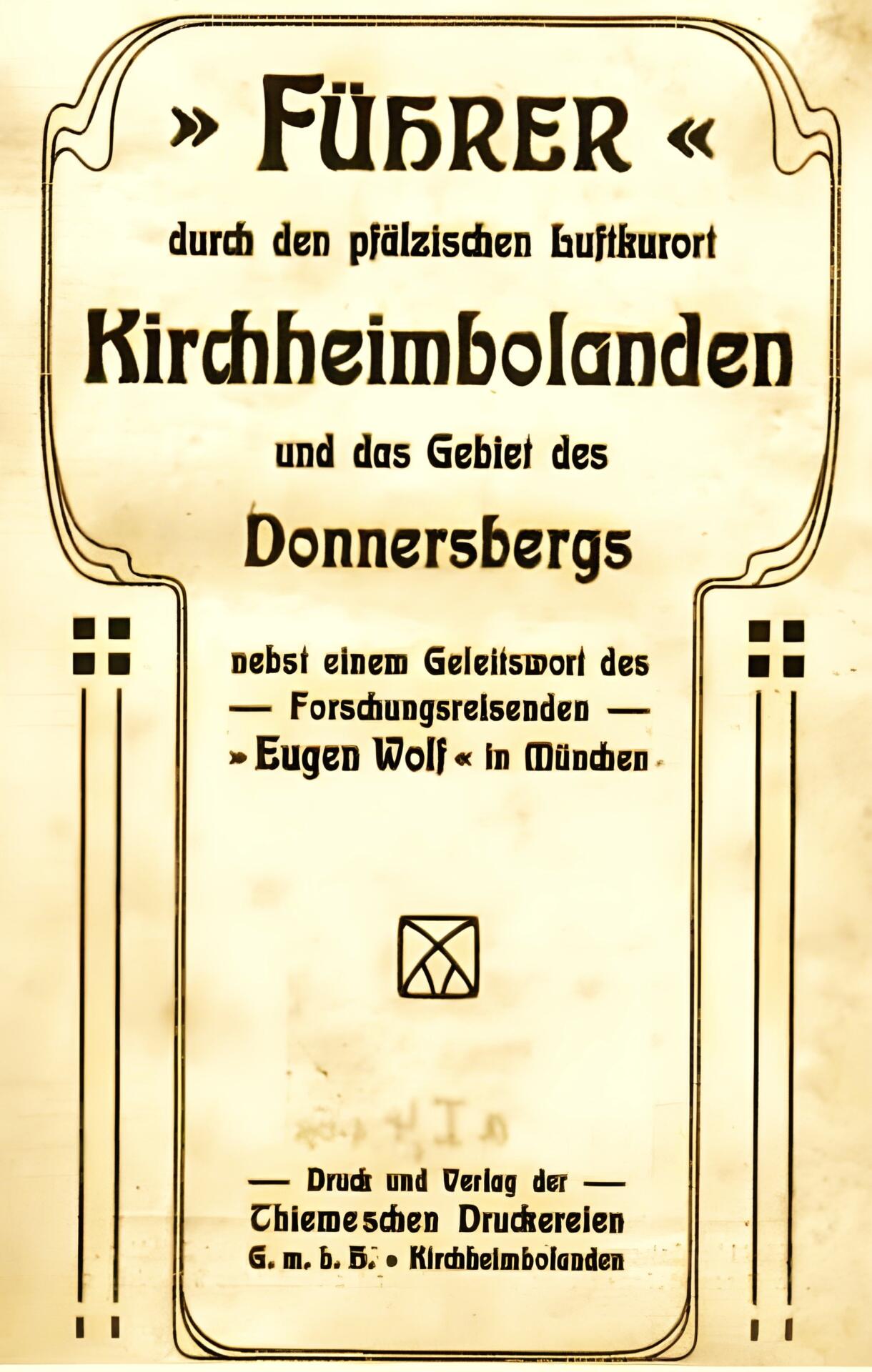
Imperial flair
In the imperial era, railroad stations were attractive destinations for urban growth if they were built outside the residential area of the time, as was the case in Kirchheimbolanden. Here, the suburb was extended and Bahnhofstrasse branched off at right angles at its current end.
This resulted in extensive construction work. The station was opened in 1874 in late classicist style as a station on the Mainz-Alzey-Marnheim-Kaiserslautern line. A hotel opened next to it.
The town mansion-like properties built in Bahnhofstrasse exude a typical imperial ambience. State buildings contribute to this, especially the “Königlich Bayrische Bezirksamt” (Royal Bavarian District Office) built in 1914/15 (until 1982 District Office, Bahnhofstrasse 17). The post office had existed opposite (Vorstadt 41) since 1907. As early as 1925, however, the post office was moved to the lower Bahnhofstraße (Bahnhofstr. 7) and the savings bank moved into the former post office. However, its late Gründerzeit building only existed until the 1970s. A contemporary new building was then erected.
In contrast, the former “Königlich Bayrische Rentamt” (tax office, Vorstadt 48, police station since 1986), built in 1893 with a neo-baroque façade, has been preserved as an architecturally representative “counterpart” to the station.
The imperial visitor, who arrived by train at the time, may therefore have been in the right mood when entering the city: We walk through an avenue [die Bahnhofstraße] to Kaiserstraße [heute Marnheimer Straße]. The path then continues through the suburbs to the city center. In many places, the traces of the former residence can be seen with pleasure, as can the impressive architectural evidence of the Middle Ages. According to the “Guide to the Palatinate climatic health resort of Kirchheimbolanden” from 1905.
Just as he was in the imperial era, we hope that with today’s information resources we too have been a helpful guide through the medieval, baroque and Palatinate-Bavarian Kirchheimbolanden.
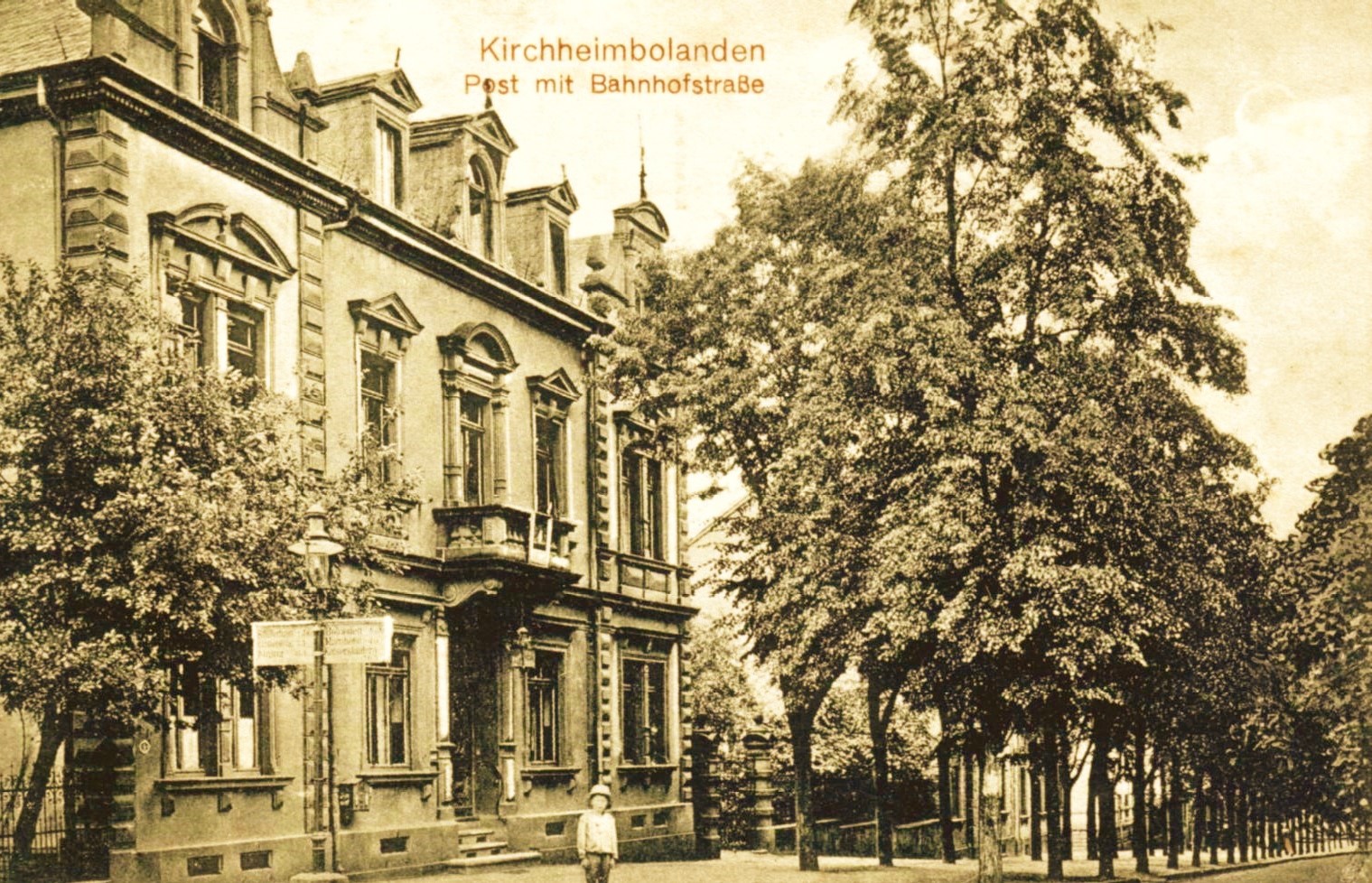
Imperial flair
Society in the imperial era was highly dynamic. Industrialization and urbanization changed the world of work and lifestyles. This was evident not only in the large cities, but also in the many small rural towns.
The “civic spirit” became the connecting link. It was expressed above all in housing culture and a social awareness that, given private financial possibilities, also set urban planning accents as a commitment primarily for charitable, religious or social purposes.
This can also be seen in many places in imperial Kirchheimbolanden. Names such as Franz Josef Pilgeram, Carl Glaser and Heinrich von Brunck stand for this, as does that of the Wolff family, among others.
The “Guide to the climatic health resort of Kirchheimbolanden”, published in 1905, highlights Wolff’s commitment to the foundation with a photo framed in Art Nouveau style.
For in the suburb, according to the city route description of the time, we see the Wolffstift, a handsome building bequeathed by Mrs. Rentamtmann Wolff to the Palatinate Deaconess Association, which is used as a convalescent home for sisters in need of rest.
Today, this “convalescent home” with its park (Vorstadt 32/34) is a spacious “senior citizens’ center”, which operates as the “Wolffstift” in the spirit of “Mrs. Rentamtmann’s” civic foundation commitment.
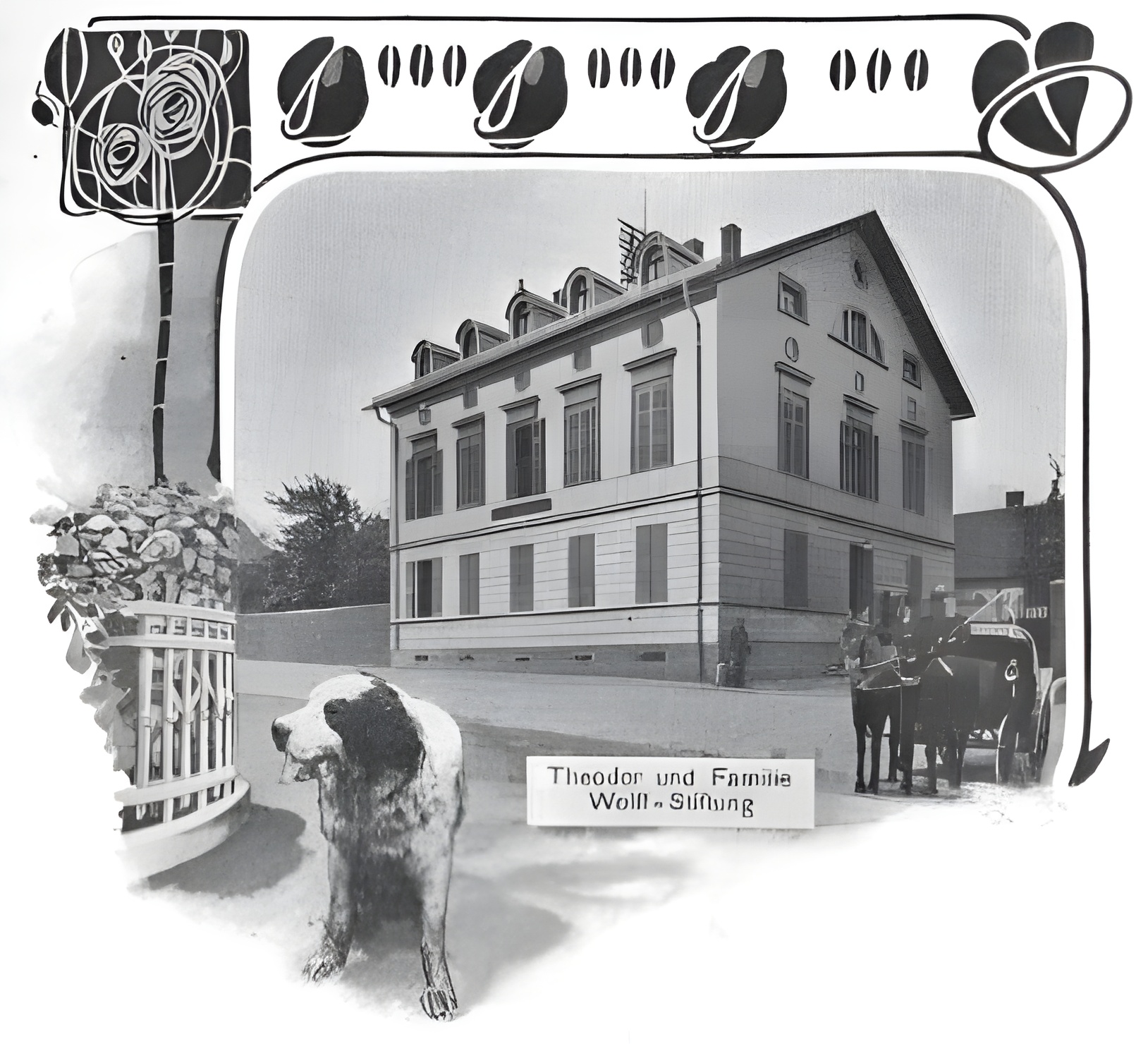
Imperial industrialization
In the late 19th century, the industrialization of the imperial era was also reflected in the townscape of Kirchheimbolanden. However, according to the trade census of 1888, there were still only seven “factories and industrial plants” in the town, which now had a population of 3,000, the largest of which was the Coblitz and Waltgenbach shoe factory with 172 employees.
Their factory building at Vorstadt 40, built in 1906, is a prestigious four-storey industrial building with 36 window axes and 5 window axes, where safety shoes are manufactured today with a worldwide sales market.
Another “factory and commercial facility” was located diagonally opposite at Vorstadt 27 in the imperial era, the Ruff bookbindery and stationery factory.
In 1921, the Volksbank, founded in 1862 as Handwerker- und Vorschußverein , moved into the “large-volume plaster building” with historicizing façade structure, which was built at the end of the 19th century and today has its bank building in the service center in Uhlandstraße.
Around 1900, Kirchheimbolanden was thus on a promising path of economic development despite its location on the edge of the Palatinate, 5 kilometers from the Royal Bavarian-Grand Ducal-Hessian-Darmstadt state border.
